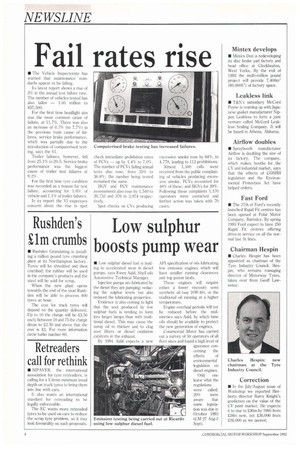Fail rates rise
Page 80

If you've noticed an error in this article please click here to report it so we can fix it.
• The Vehicle Inspectorate has warned that maintenance standards appear to be falling.
Its latest report shows a rise of 3% in the annual test failure rate. The number of vehicles tested has also fallen — 1.06 million to 855, 500.
For the first time headlight aim was the most common cause of failure, at 11.7%. There was also an increase of 0,7% (to 7.7%) in the previous main cause of failures, service brake performance, which was partially due to the introduction of computerised testing, says the VI.
Trailer failures, however, fell from 25.1% to 20.5. Service brake performance was the biggest cause of trailer test failures at 9.2%.
For the first time tyre condition was recorded as a reason for test failure, accounting for 1.6% of vehicle and 1.1% of trailer failures.
In its report the VI expresses concern about the rise in spot check immediate prohibition rates of PCVs — up by 1,4% to 7.0%. The number of PCVs failing annual tests also rose, from 35% to 36.8%: the number being tested remained the same.
HGV and PCV maintenance assessments also rose by 1,540 to 39,732 and 376 to 3,974 respectively.
Spot checks on CVs producing excessive smoke rose by 84%, to 4,778, leading to 113 prohibitions.
Almost 1,500 calls were received from the public complaining of vehicles producing excessive smoke. PCVs accounted for 46% of these, and HGVs for 39%. Following these complaints 1.170 operators were contacted and further action was taken with 70 CaSeS.




































































































